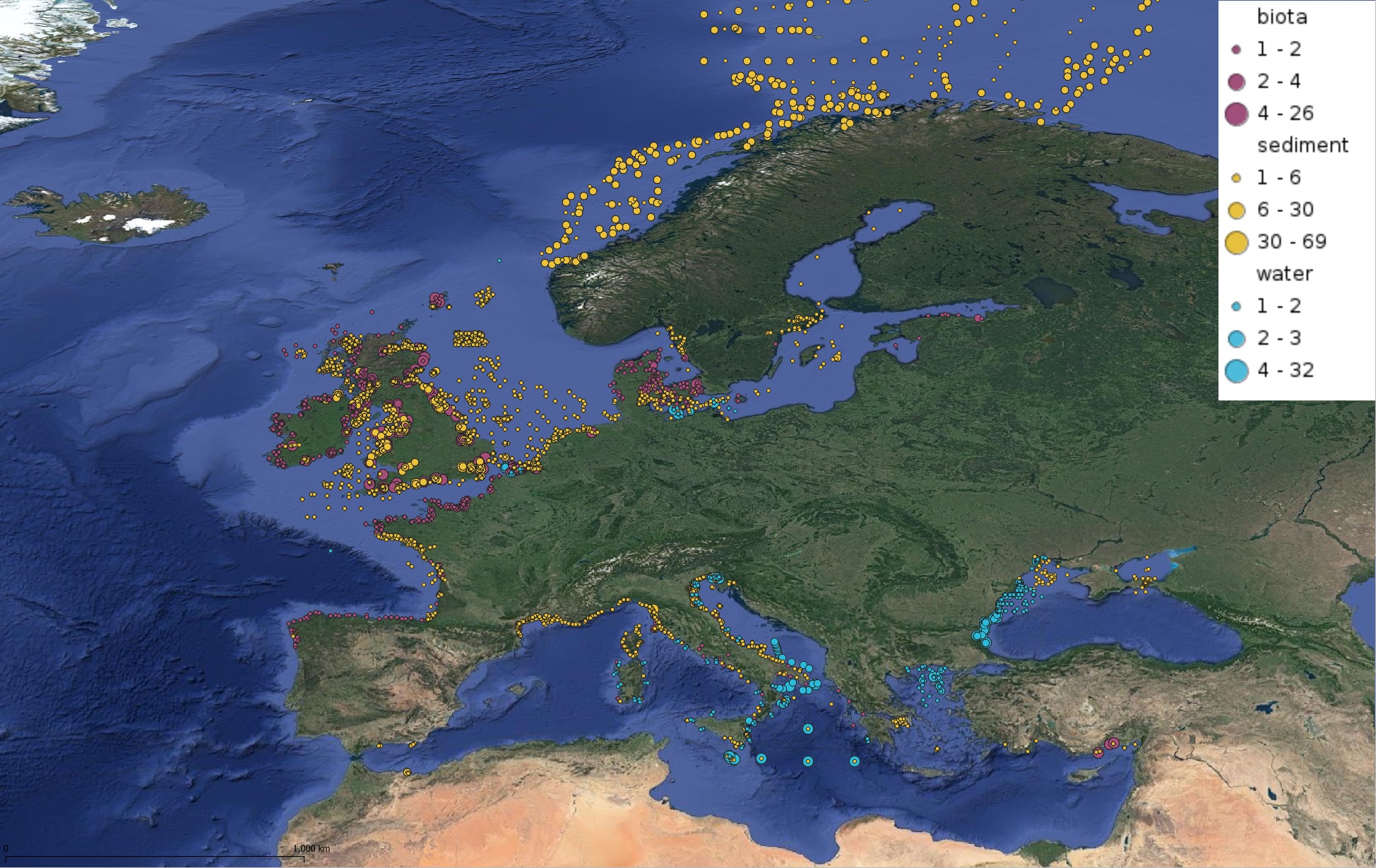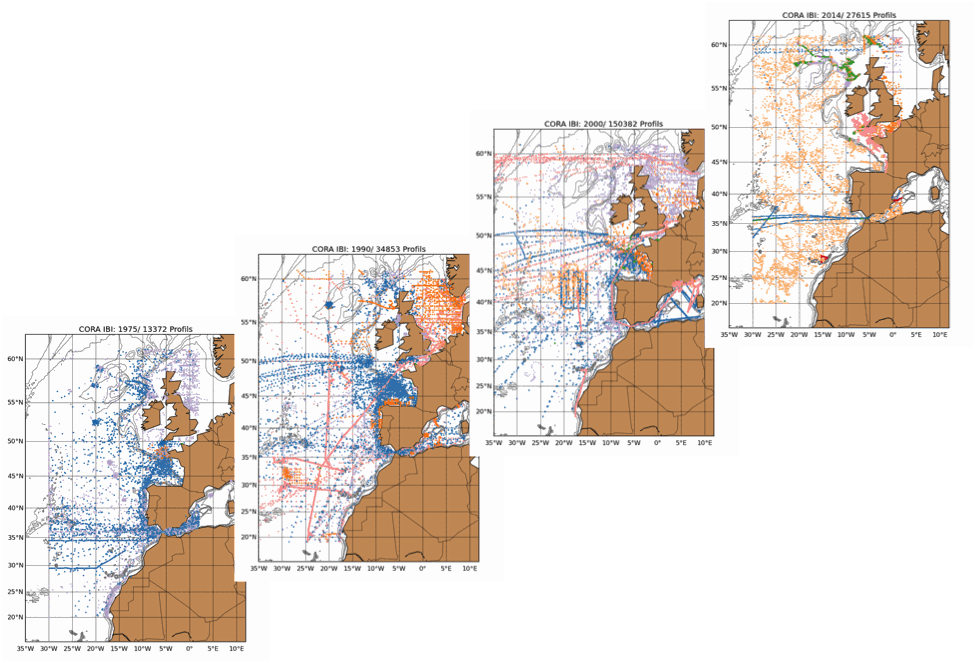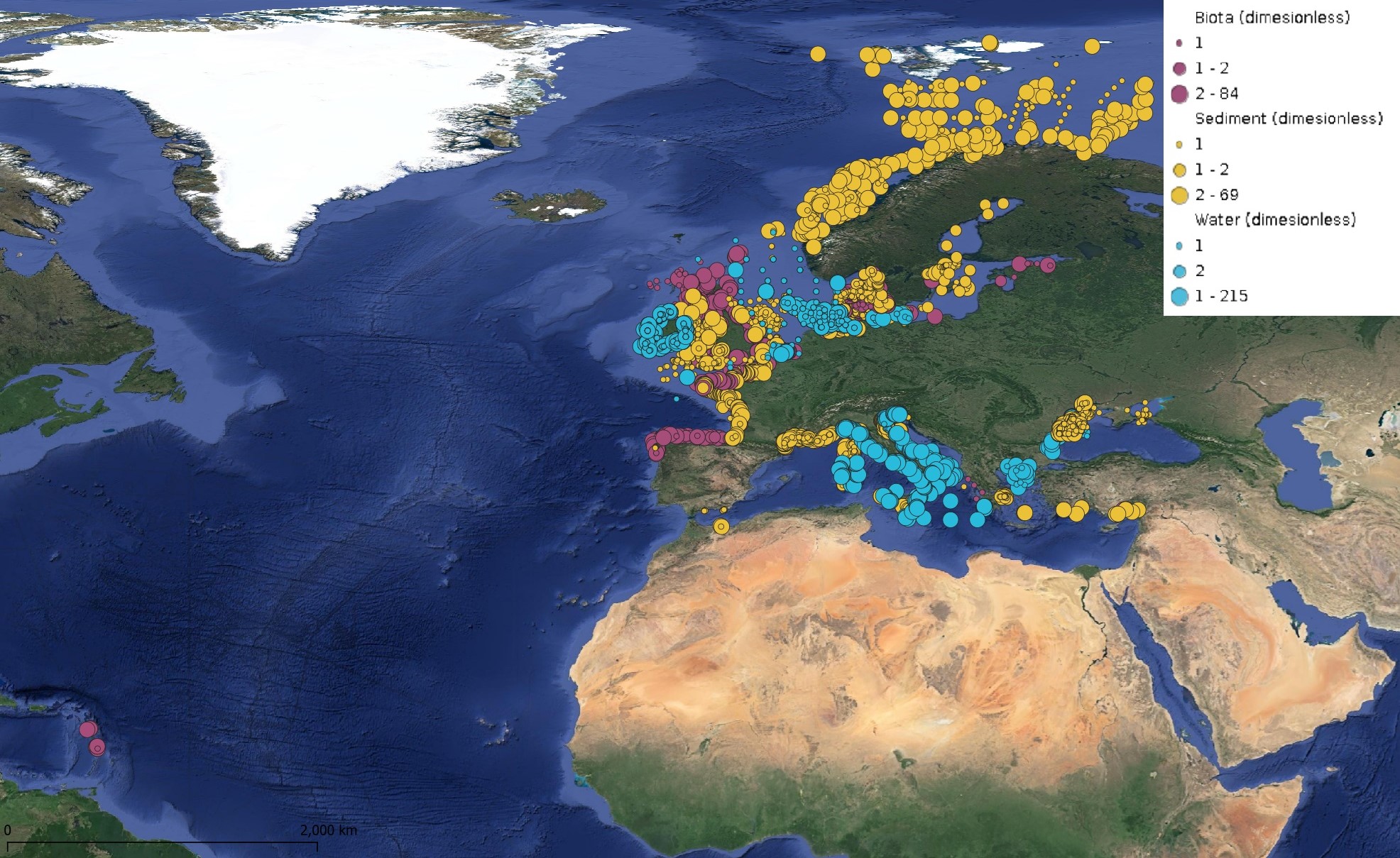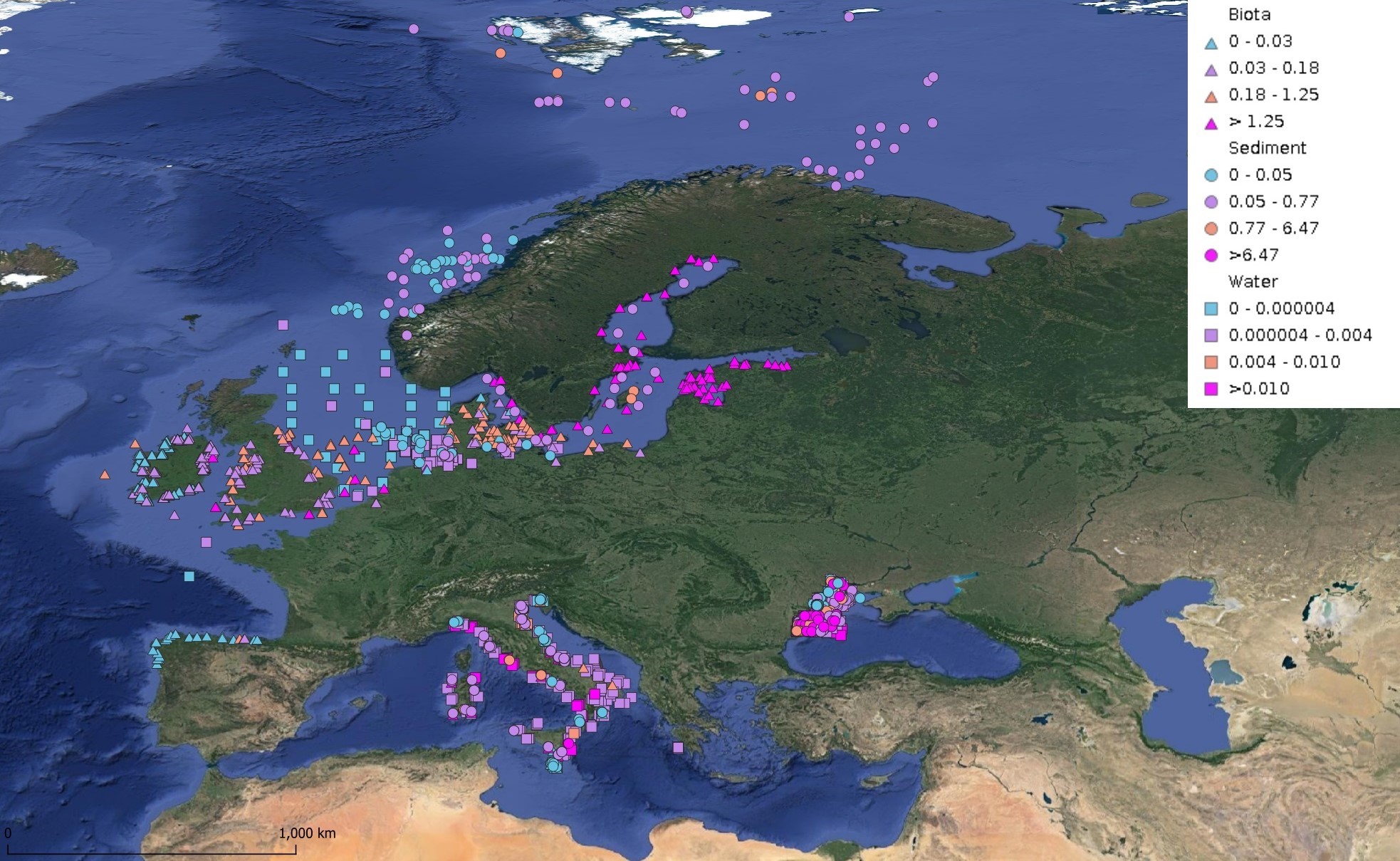2024
Type of resources
Available actions
Topics
Keywords
Contact for the resource
Provided by
Years
Formats
Representation types
Update frequencies
status
Scale
Resolution
-

'''Short description:''' For the Mediterranean Sea - The product contains daily Level-3 sea surface wind with a 1km horizontal pixel spacing using Synthetic Aperture Radar (SAR) observations and their collocated European Centre for Medium-Range Weather Forecasts (ECMWF) model outputs. Products are processed homogeneously starting from the L2OCN products. '''DOI (product) :''' https://doi.org/10.48670/mds-00342
-

This product displays for Fluoranthene, positions with values counts that have been measured per matrix and are present in EMODnet regional contaminants aggregated datasets, v2022. The product displays positions for all available years.
-

The Coriolis Ocean Dataset for Reanalysis for the Ireland-Biscay-Iberia region (hereafter CORA-IBI) product is a regional dataset of in situ temperature and salinity measurements. The latest version of the product covers the period 1950-2014. The CORA-IBI observations comes from many different sources collected by Coriolis data centre in collaboration with the In Situ Thematic Centre of the Copernicus Marine Service (CMEMS INSTAC). The observations integrated in the CORA-IBI product have been acquired both by autonomous platforms (Argo profilers, fixed moorings, gliders, drifters, sea mammals, fishery observing system from the RECOPESCA program), research or opportunity vessels ( CTDs, XBTs, ferrybox). This CORA-IBI product has been controlled using an objective analysis (statistical tests) method and a visual quality control (QC). This QC procedure has been developed with the main objective to improve the quality of the dataset to the level required by the climate application and the physical ocean re-analysis activities. It provides T and S individual profiles on their original level with QC flags. The reference level of measurements is immersion (in meters) or pressure (in decibars). It is a subset on the IBI (Iberia-Bay-of-Biscay Ireland) of the CMEMS product referenced hereafter. The main new features of this regional product compared with previous global CORA products are the incorporation of coastal profiles from fishery observing system (RECOPESCA programme) in the Bay of Biscay and the English Channel as well as the use of an historical dataset collected by the Service hydrographique de la Marine (SHOM).
-

This product displays for Fluoranthene, positions with values counts that have been measured per matrix for each year and are present in EMODnet regional contaminants aggregated datasets, v2024. The product displays positions for every available year.
-

'''Short description:''' Global sea ice thickness from merged L-Band radiometer (SMOS ) and radar altimeter (CryoSat-2, Sentinel-3A/B) observations during freezing season between October and April in the northern hemisphere and April to October in the southern hemisphere. The SMOS mission provides L-band observations and the ice thickness-dependency of brightness temperature enables to estimate the sea-ice thickness for thin ice regimes. Radar altimeters measure the height of the ice surface above the water level, which can be converted into sea ice thickness assuming hydrostatic equilibrium. '''DOI (product) :''' https://doi.org/10.48670/moi-00125
-

This dataset is a supplement to the study "The open ocean kinetic energy cascade is strongest in late winter and spring" by René Schubert, Oscar Vergara, and Jonathan Gula, published in Nature Communications Earth and Environment. It includes the code for the underlying analysis and visualization in the jupyter notebook 'code_schubert_etal_2023_ncommsenv.ipynb', the data to reproduce the figures, and the monthly climatologies of the estimated scale kinetic energy transfer and of the transition scale from balanced to unbalanced flows based on JASON-3 data. The transition scale has been computed by Oscar Vergara. All the other data and code have been created by René Schubert. The analysis bases on numerical ocean simulations that have been run by Jonathan Gula.
-

This product displays for Hexachlorobenzene, median values since 2012 that have been measured per matrix and are present in EMODnet regional contaminants aggregated datasets, v2024. The median values ranges are derived from the following percentiles: 0-25%, 25-75%, 75-90%, >90%. Only "good data" are used, namely data with Quality Flag=1, 2, 6, Q (SeaDataNet Quality Flag schema). For water, only surface values are used (0-15 m), for sediment and biota data at all depths are used.
-

Unveiling the implications of hybridization on fitness stands as a primary focus in the realms of ecology and evolution. Numerous investigations elucidate how evolutionary mechanisms regulate the intricate pattern of introgression across genomes, yet few have examined the consequential impact of genetic admixture on fitness attributes. Leveraging the Western Mediterranean population of the European seabass (Dicentrarchus labrax), a population formed through hybridization of the Atlantic and Mediterranean lineages in the Alboran Sea, we utilized the Axiom Sea Bass 57k SNP DlabChip array to genotype 1850 hybrid individuals. This enabled us to evaluate the correlation between individual admixture levels and fitness traits under varying thermal conditions (19°C, 21°C, 23°C, and 25°C). Our initial findings unveil a male-biased sex ratio and high temperature sensitivity among admixed individuals with a greater proportion of Atlantic ancestry. Subsequently, our analysis demonstrates that individuals with a higher Atlantic genetic background also exhibit reduced body weight (a parameter linked to fecundity in fish) compared to those with lower Atlantic ancestry. These outcomes underscore the disadvantageous nature of Atlantic ancestry introgression in the Mediterranean region, aligning with previous observations of the elimination of Atlantic ancestry segments subsequent to hybridization.
-

Tracking data of 7 grey seals were obtained from the deployment of Fastloc GPS/GSM tags developed by the Sea Mammal Research Unit (UK). Full tag description is available at: http://www.smru.st-andrews.ac.uk/Instrumentation/GPSPhoneTag/. The tags include a wet-dry sensor from which haulout events are recorded, a pressure sensor providing detailed dive data, as well as a Fastloc GPS recording irregular locations when the seal is not underwater. Data is stored onboard and transmitted via the GSM network when the seal is in the reception range. The data provided here are the individual GPS locations of the seals fitted with these tags for an average duration of 135 days.
-

The ReZoEnv field campaign was conducted at 9 sites distributed within contrasted seagrass (Zostera notlei) meadows in the Arcachon Bay. This multi-parameter survey was conducted during one year (November 2015 – November 2016). Water levels, temperature and light were recorded every 10 minutes. While bed sediment characteristics (granulometry, water content, organic matter content), seagrass characteristics (coverage, biometry, chlorophyll and CNP content) were measured monthly. Additionally, wind-wave parameters were obtained from high frequency pressure sensor at 4 sites, every 20 minutes. List of sites : - ANDE : 44.745091 N, 1.121366 O - FONT : 44.722631 N, 1.080133 O - GAIL : 44.662573 N, 1.099575 O - GARR : 44.705132 N, 1.121562 O - HAUT : 44.729331 N, 1.15608 O - ILE : 44.683117 N, 1.162716 O - JACQ : 44.724563 N, 1.181109 O - PASS : 44.689927 N, 1.089491 O - ROCH : 44.648529 N, 1.127736 O
 Catalogue PIGMA
Catalogue PIGMA